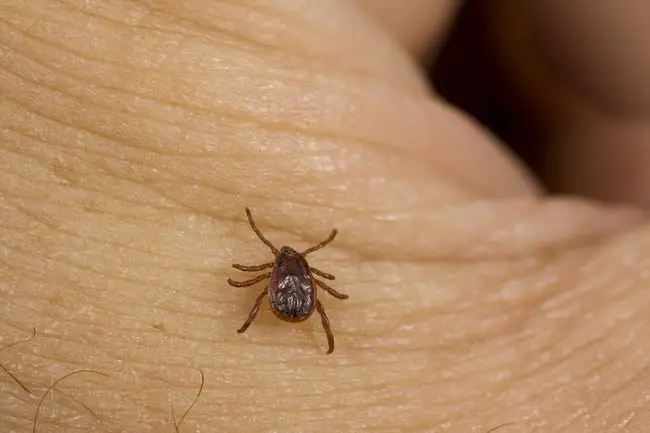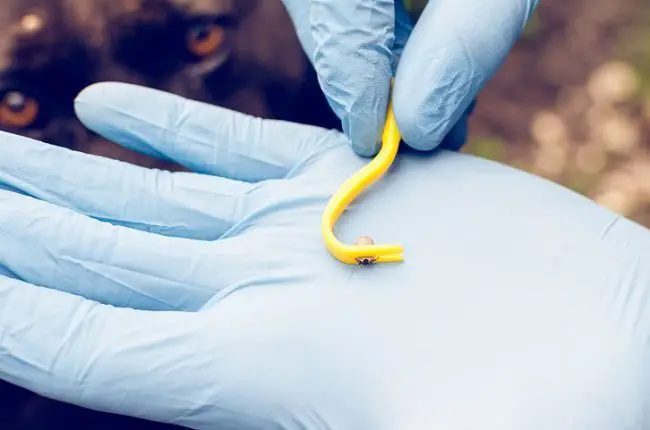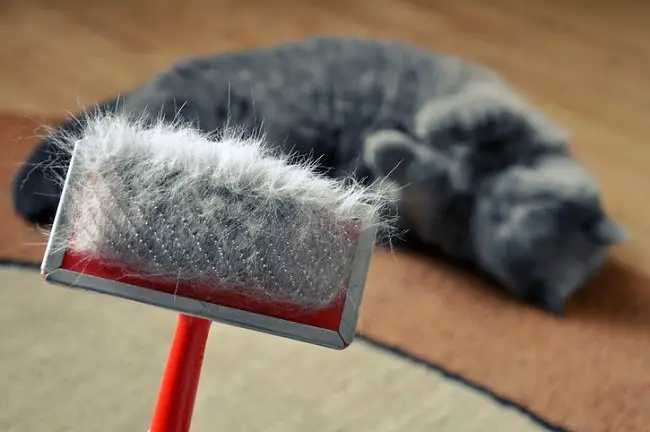Studies show that the United Kingdom’s tick population is on the rise.
While there is no definitive data to confirm their exact numbers, global warming and an increasing number in deer has contributed to the spike.
Unfortunately, that means you’re more likely to find one of these unsightly bloodsuckers on your feline this summer.

There are more than twenty different tick species found in the UK. Some only feed on certain types of animals. Similarly, some – but not all – species carry bacteria that can lead to illnesses such as Lyme disease.
Each species can harbour some variety of pathogens.
While it helps to be proactive against ticks, there is always a chance one might reach your cat, especially if you live in a wooded area. Fortunately, ticks and tick bites are treatable.
Early detection makes treatment easier, so keep a close eye on your pet.
Here is a step-by-step guide on how to remove cat ticks from your cat.
Contents
Identifying Ticks
The first step to fighting ticks is to know what they look like.
Ticks vary in size from 1mm to 1cm. Their appearance resembles a bloated spider.

When you are searching your cat’s fur for ticks, the tick may be small enough that it only feels like a small bump on the skin.
They also tend to attach themselves to the head, neck, ears, and feet of pets, so that’s where you’ll want to focus your search.
The most common species is Ixodes ricinus, also known as the sheep tick.
Fully grown, the sheep tick can expand to 11mm in length and typically has a dark, durable, dorsal shield that covers its abdomen. While this species is best known for attacking livestock, it is also attracted to humans, cats, dogs, and horses.
The Ixodes canisuga and Ixodes haxgonus are also likely to go after your pets.
Known as the fox tick and the hedgehog tick respectively, both are common throughout the United Kingdom. Appearance-wise, Ixodes canisuga will look like a grape once engorged, while the Ixodes haxgonus has distinctive heart-shaped scutum.
Ticks prefer warm, damp climates and ample amounts of vegetation. They are most likely to be found in habitats including grass, trees, shrubbery, and leaves. While rural areas are typically more conducive for ticks, they are increasingly common in the urban setting too.
Why Ticks Are Dangerous
Not all ticks carry bacteria—most of the time their bites are harmless. However, some ticks do bring along infectious bacteria, which can lead to adverse side effects.

If you remove a tick from your cat and notice symptoms of illness in the following weeks, you should contact your veterinarian.
While the chances of death are rare, Lyme disease is an increasingly common occurrence following a tick bite.
In fact, studies from the Dryden in Hampshire show a ten-fold increase in the rate of Lyme disease cases in the UK over the past decade.
Depending on your cat’s allergies, you can expect a variety of symptoms. For instance, if your cat is allergic to tick bites, but the tick was not carrying a contagion, you might see swelling and the skin may feel hot at the site of the bite.
However, if the tick was infected, symptoms may include the following:
- Rash
- Difficulty breathing
- Fever
- Lethargy
- Swollen lymph nodes
- Loss of appetite
- Nasal discharge
These symptoms can be expected to get worse over time. It is essential to consult your veterinarian as soon as possible for further testing. Currently, there is no Lyme disease vaccine for cats.
How to Safely Remove a Tick from a Cat
If you find a tick on your cat’s skin, there is no need to fret. Ticks are relatively slow-moving and can take more than a day to draw blood from their host.

Here is a step-by-step guide to removing ticks.
- First, clean the area around the tick bite with some rubbing alcohol. Then, find fine-tipped tweezers to grasp the tick. Make sure to get as close to its head as possible before clamping down on it.
- Pull up slowly, but firmly. Don’t twist or yank the tweezers, as this may cause the tick’s head to detach and remain burrowed in the skin. If the tick does break in two, make sure to recover the head with clean tweezers. If you can’t easily reach the head, leave it alone and let the area heal.
- Once the tick is extracted, clean the bite area again with rubbing alcohol. Soap and water will work too. Doing this minimizes the chance of infection.
- Dispose of the tick. There are a couple of options here, including getting it tested, placing it in alcohol, flushing it down the toilet, or sealing it in a plastic bag. Whatever you do, don’t crush it with your fingers.
Tick Prevention
The most important thing is to remain vigilant for the appearance of ticks. Furthermore, the best way to prevent ticks is to keep your cat indoors.
This choice significantly reduces the odds of your cat encountering a tick, compared to a scenario where your cat is allowed to roam around in nature.
You can also reduce the risk of tick bites by placing a flea or tick collar on your feline friend.
The most common and effective types are absorption-based collars that infuse your pet with an insecticide that kills fleas and ticks. Other brands work through the emission of ultrasonic waves and gases that are harmful to pests, but not your pet.
While your cat likely does not enjoy taking baths, shampoos are a helpful method of prevention as well. Other treatments include sprays and topical creams that should be regularly applied.
Finally, you may also choose to place insecticides or pesticides in your yard, which make it safe for your cat to roam outside your home.
As an Amazon Associate I may earn a small fee from qualifying purchases at no extra cost to you. This helps us run the site, so thanks for your support!







Leave a Comment